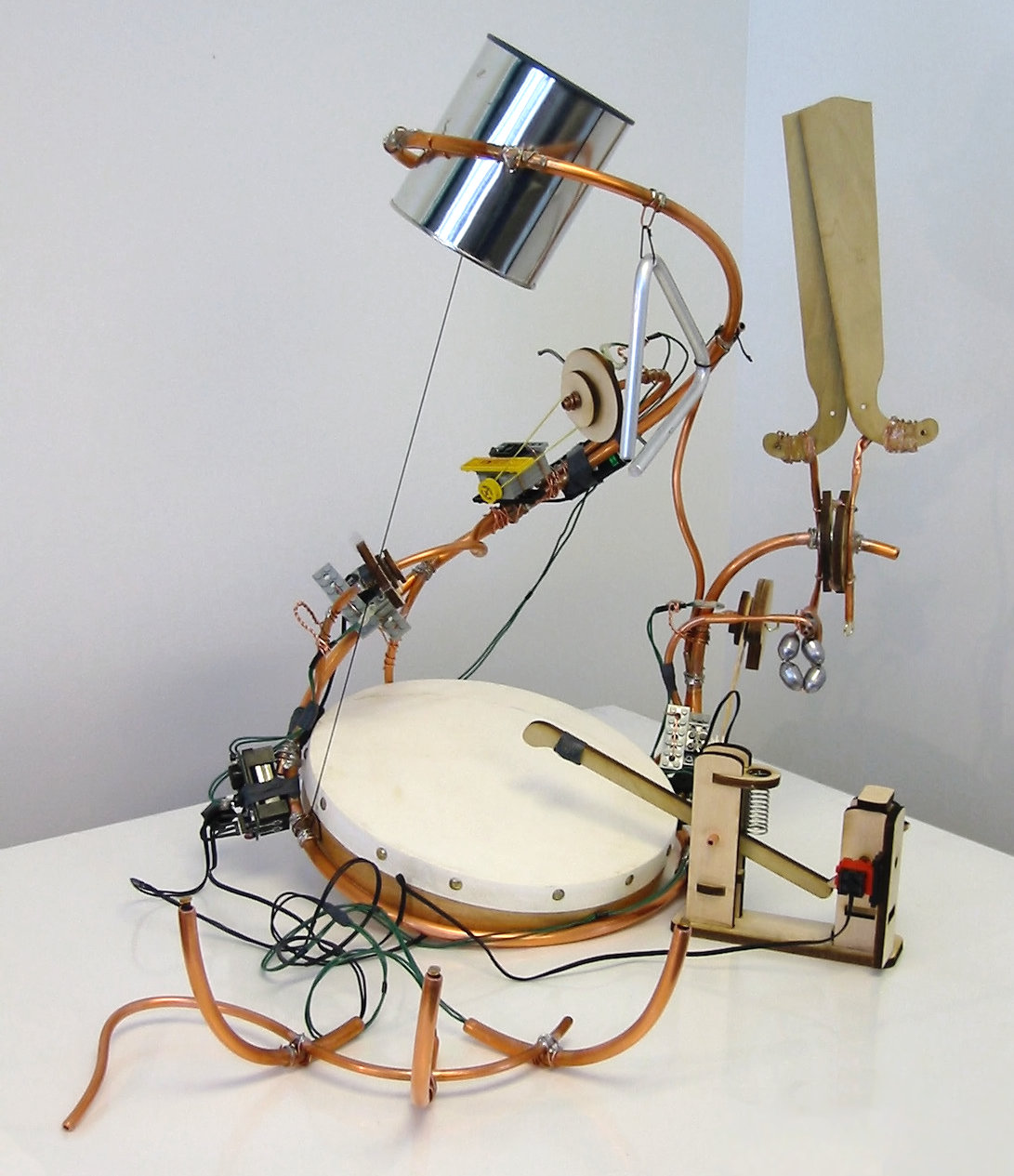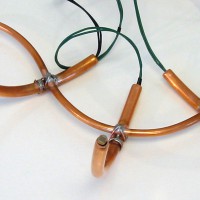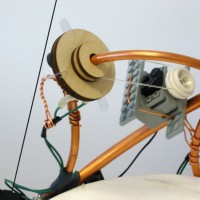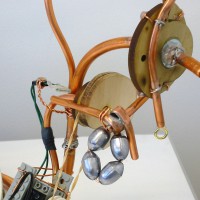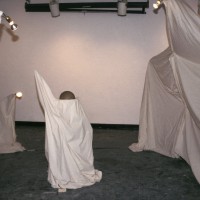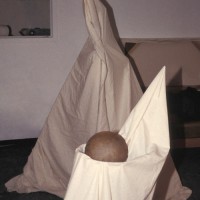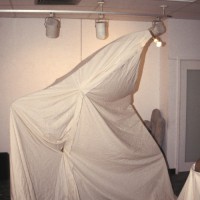The Whatchamathumper
Date:
April 2004
Media/tools:
copper tubing, Lego Mindstorm motors, light sensors, MIT Cricket sensor nodes, paint can, pre-made drum, wood
The Whatchamathumper was an interactive mechanical percussionist, inspired by the crazy musical contraptions that Dr. Seuss drew for his children's books. This was a class project that I worked on with another student (Nathan Wilcox) during graduate school, for a class called Things that Think.
The concept was to create a musical toy that would engage the viewer both visually and through sound, combining familiar elements in an unfamiliar way. There were four instruments--a drum, a triangle, a clapper, and a strummer--which the viewer controlled by interacting with an array of light sensors. The instruments were driven by MIT Cricket sensor nodes coupled with Lego Mindstorm motors.
My then-two-year-old nephew got to see this thing in action during a visit to Colorado, and he gave it a happy burble of approval, which is the highest critical praise I could ask for.
The concept was to create a musical toy that would engage the viewer both visually and through sound, combining familiar elements in an unfamiliar way. There were four instruments--a drum, a triangle, a clapper, and a strummer--which the viewer controlled by interacting with an array of light sensors. The instruments were driven by MIT Cricket sensor nodes coupled with Lego Mindstorm motors.
My then-two-year-old nephew got to see this thing in action during a visit to Colorado, and he gave it a happy burble of approval, which is the highest critical praise I could ask for.
